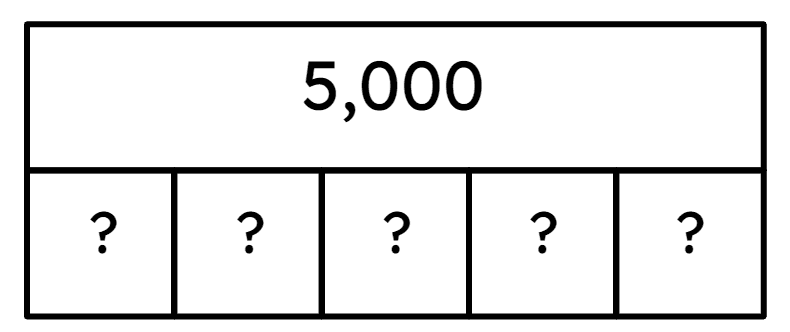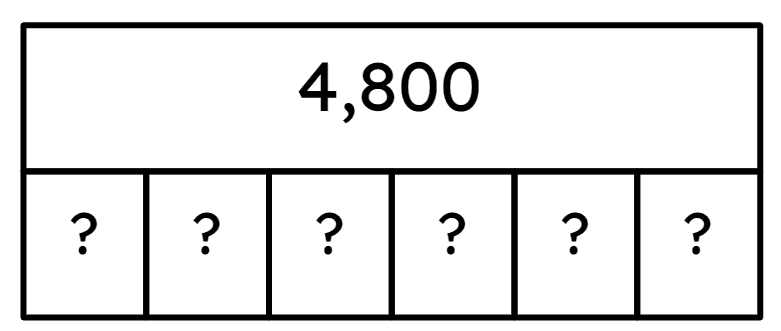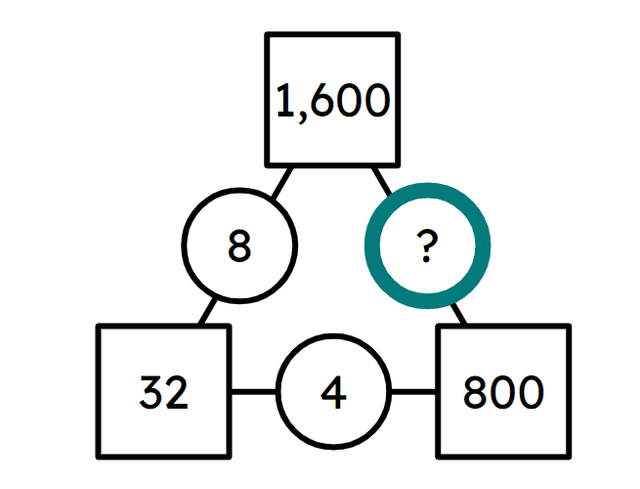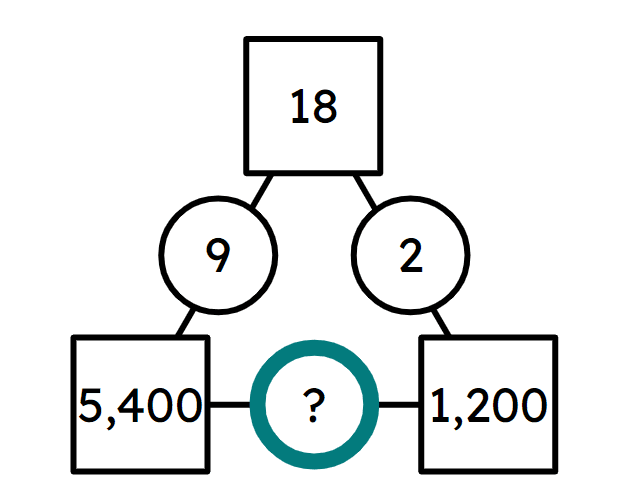Myths about teaching can hold you back
- Year 4
Scale division facts derived from multiplication facts by 100
I can scale division facts derived from multiplication facts by 100
- Year 4
Scale division facts derived from multiplication facts by 100
I can scale division facts derived from multiplication facts by 100
These resources will be removed by end of Summer Term 2025.
Switch to our new teaching resources now - designed by teachers and leading subject experts, and tested in classrooms.
These resources were created for remote use during the pandemic and are not designed for classroom teaching.
Lesson details
Key learning points
- If the dividend is multiplied by 100 then the quotient will be one hundred times the size.
- The dividend is equivalent to the product in the inverse calculation.
- 18 divided by 6 is equal to 3 so 1,800 divided by 6 is equal to 300 or 18 hundreds divided by 6 is equal to 3 hundreds.
Keywords
Dividend - The dividend is the number being divided.
Divisor - The divisor is the number we are dividing by.
Quotient - The quotient is the result after division has taken place. It is the whole number part.
Scaling - Scaling is when a given quantity is made ___ times the size.
Common misconception
Because multiplication is commutative and division isn't, finding related division facts can be tricky. For example, 15 ÷ 3 = 5 is related to 3 × 5 = 15 despite the factor's positions swapping.
Get children to write 2 related multiplication facts from a division fact. For example, 3 × 5 = 15 and 5 × 3 = 15 are related to 15 ÷ 3
To help you plan your year 4 maths lesson on: Scale division facts derived from multiplication facts by 100, download all teaching resources for free and adapt to suit your pupils' needs...
To help you plan your year 4 maths lesson on: Scale division facts derived from multiplication facts by 100, download all teaching resources for free and adapt to suit your pupils' needs.
The starter quiz will activate and check your pupils' prior knowledge, with versions available both with and without answers in PDF format.
We use learning cycles to break down learning into key concepts or ideas linked to the learning outcome. Each learning cycle features explanations with checks for understanding and practice tasks with feedback. All of this is found in our slide decks, ready for you to download and edit. The practice tasks are also available as printable worksheets and some lessons have additional materials with extra material you might need for teaching the lesson.
The assessment exit quiz will test your pupils' understanding of the key learning points.
Our video is a tool for planning, showing how other teachers might teach the lesson, offering helpful tips, modelled explanations and inspiration for your own delivery in the classroom. Plus, you can set it as homework or revision for pupils and keep their learning on track by sharing an online pupil version of this lesson.
Explore more key stage 2 maths lessons from the Understand what happens when a number is multiplied or divided by 10 and 100 unit, dive into the full primary maths curriculum, or learn more about lesson planning.

Licence
Prior knowledge starter quiz
6 Questions
Q1.Which number is the dividend, divisor and quotient in the following equation? Match them. 84 ÷ 12 = 7
dividend
divisor
quotient
Q2.Match the times tables to the related division facts with a dividend and quotient 100 times the size.
2,100 ÷ 7 = 300
4,800 ÷ 4 = 1,200
3,200 ÷ 4 = 800
4,500 ÷ 9 = 500
Q3.What is the missing factor in this equation?
× 8 = 48
Q4.What is the missing factor in this equation?
× 8 = 88
Q5.Match these multiplication facts with their related division facts.
630 ÷ 9 = 70
550 ÷ 11 = 50
240 ÷ 8 = 30
350 ÷ 7 = 50
Q6.True or false? If the dividend is made 10 times the size the quotient will one-tenth times the size.
Assessment exit quiz
6 Questions
Q1.Complete the sentence below. If you multiply the __________ by 100 and the divisor by 100 then the quotient will remain the same.
Q2.True or false? If the dividend and divisor are made 100 times the size the quotient will remain the same.
Q3.What is the missing number in the bar model shown? Each part has an equal value.

Q4.What is the missing number in the bar model shown? Each part has an equal value.

Q5.What is the missing number in the multiplicative arithmagon shown?

Q6.What is the missing number in the multiplicative arithmagon shown?



